Close UP
Volunteer Group ABOT KAMAY (Filipino volunteer group) ~Caregivers from the Philippines Found a Group to Give Back and Give Thanks to the Community~
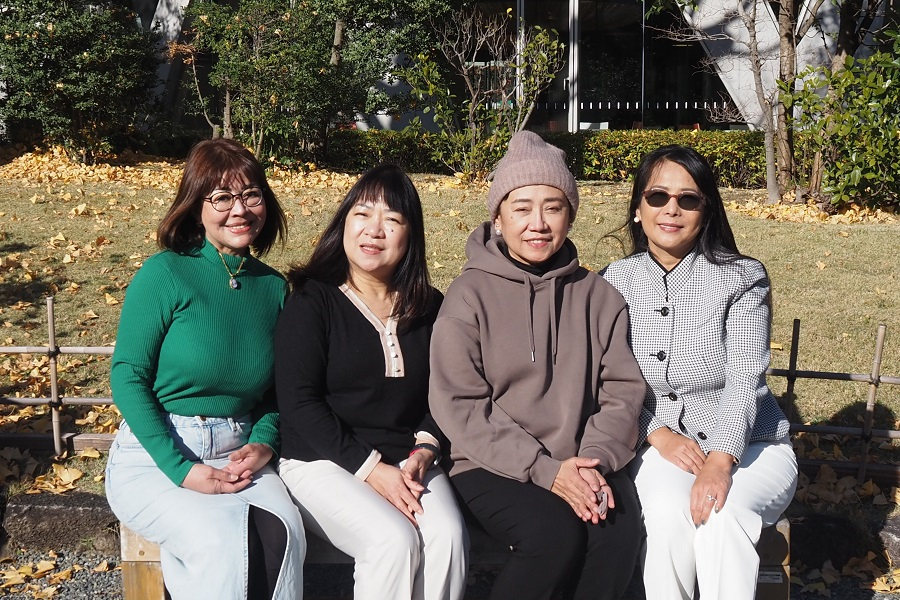
ABOT KAMAY is a volunteer group formed by people from the Philippines. All of them work as caregivers and stay active in Japanese society by helping to interpret at international events and performing dances at local festivals and welfare facilities, as well as in their communities. We interviewed the leader, Ms. Herminia Hikishima, and members, Ms. Linda Tokiwa, Ms. Mai Nishida, and Ms. Mercedes Egawa, about how ABOT KAMAY was founded, its activities, and their caregiving work.
Activities of ABOT KAMAY
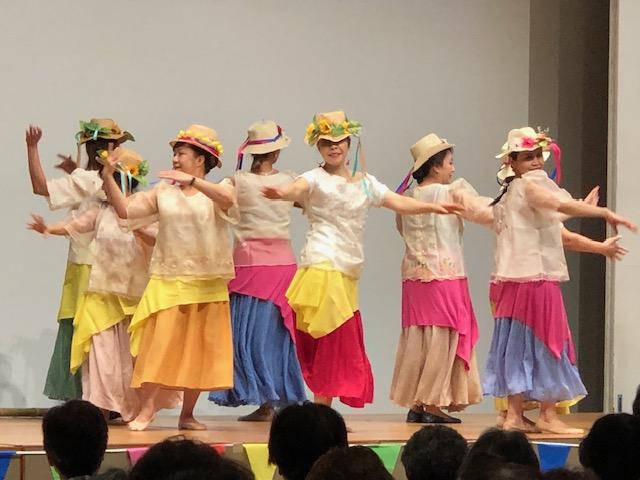
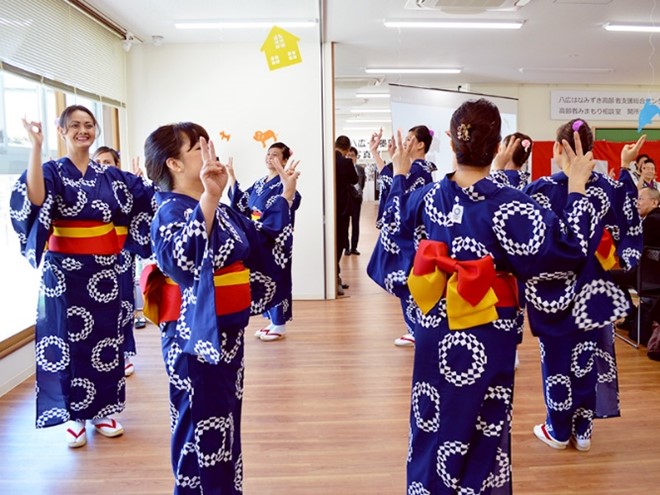
ABOT KAMAY was founded with the intention of "giving back to the community," by members who attend a Japanese language class in Sumida City, Tokyo. The group has been active for more than 8 years since its launch in 2016. The group name ABOT KAMAY means "helping each other, taking each other's hands" in Tagalog. The name of this group reflects the thoughts of the members who use their hands to provide care in their caregiving work.
Members of ABOT KAMAY have been active in the community, performing traditional dances in Filipino costumes and holding cooking classes at events and welfare facilities in Sumida City.
"When we put on our costumes and perform traditional dances at a facility, people are very happy. When we performed the Zumba dance, (care facility) workers also danced. (Then) a (facility user) in a wheelchair got up and started to dance with us! We had a great time and will never forget it," says Herminia, the leader of the group.
The impetus for establishing the group came from the members' encounters with caregivers, and a local Japanese language class that helped them pass their caregiver exam.
Filipinos are front-runners among foreigners in the caregiving profession.
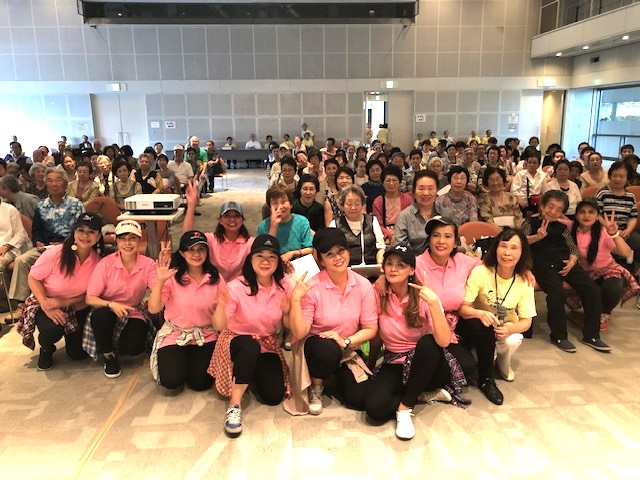
There are approximately 35,000 Filipinos living in Tokyo (as of October 2023), making it the fourth largest foreign population after the Chinese, the South Koreans, and the Vietnamese. The number of foreigners working as caregivers is increasing each year, and the percentage of those from the Philippines is particularly high.
Although each ABOT KAMAY member has a different path to their caregiving career, they all seem to have one thing in common: they wanted to get certified to work in Japan.
"I was working part-time in a factory making bento boxes for 9 years. When I was thinking about getting some kind of certification to get a job, I came across a poster that announced a Home Helper Level 2* Training Course for foreigners. I thought (a caregiving job) would be a good job, so I called right away," says Herminia.
Mai says, "I used to work at a factory, but I lost my job due to the Lehman Shock (financial crisis in 2008). I wanted a job at which I could work for a long time, so I got certified as a Home Helper Level 2."
*The Home Helper Level 2 certification was transferred to the Care Worker Induction Course by the revision of the Long-Term Care Insurance Act in 2013
A local Japanese language class which helped these ladies pass the certified care worker exam.
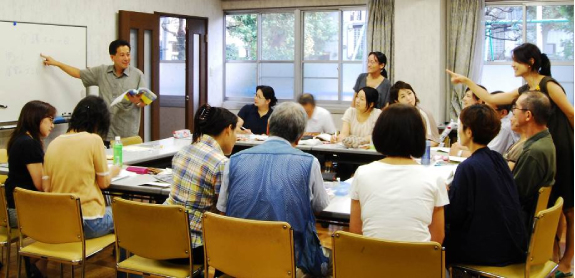
Recruitment of foreign personnel in the caregiving industry began full-scale around 2008 with the signing of the Economic Partnership Agreements (EPA) between Japan and Southeast Asian countries. The ABOT KAMAY members, Herminia, and others, began studying for their certification about three years before the conclusion of the EPA. There were almost no materials for foreigners to study for the certification exam at the time.
"We were probably the first Filipinos to study caregiving in Japan. We received many textbooks to study for our certification, but we could not read them because the kanji characters in the textbooks did not have furigana. But we could understand what teachers were saying, so we frantically took notes on what teachers were saying," Linda says.
Today, there are plenty of textbooks with furigana and English translations, as well as translated supplementary materials. But, at the time, there were no such materials, and that is why they had a very difficult time until they passed the home helper certification exam. Although the ABOT KAMAY members began working as caregivers after their certification, they felt a renewed need to learn Japanese well; including how to read and write Kanji characters.
Around that time, the Sumida Japanese-Language Education Support was established in 2008, as a "class for the community, held by local residents". This class is a learning place specializing in "Japanese for caregiving" that brings together various professionals in the Sumida area to help foreigners who work (or want to work) in the caregiving field; to study kanji and prepare for the certified care worker exam. Members of ABOT KAMAY attended and were supported in their studies for the exam.
"It was said that Filipinos could not get the certified care worker certification because of the difficulty of the Kanji characters. That is why I wanted to challenge myself. So, I studied at the Sumida Japanese-Language Education Support and was able to get the certification," says Mai.
Lower language barriers when taking national examinations that affect foreign examinees.
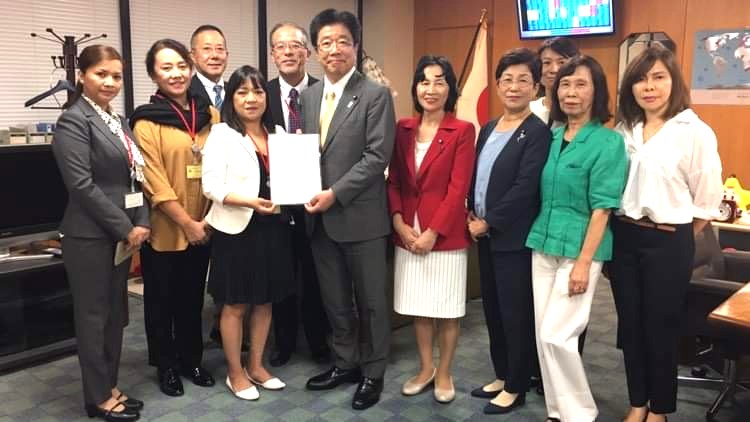
In 2015, Herminia and Mai, who studied at the Sumida Japanese-Language Education Support, passed the national exam for certified care workers. Since 2024, various considerations have been made for foreign examinees taking the national certified care worker exam. For example, the examination time is extended, furigana is added to kanji characters in examination questions, difficult expressions are paraphrased, and names of diseases are written in English. However, in 2015, those considerations were limited to a small number of examinees.
"When we passed the certified care worker (exam), foreigners living in Japan had to take the exam in the same (conditions) as Japanese. It was very difficult because there was no furigana for the kanji (in exam papers) and we had to finish the exam within the same amount of time as Japanese examinees. On the other hand, for foreigners under the EPA, considerations were given, such as kanji furigana for written exams and an extended exam time. Since both groups were foreigners, I wished we could have had the same consideration," says Herminia.
Due to this experience, the members of ABOT KAMAY took action and went to a member of the National Diet to ask them to make it so. In the first petition, they proposed that furigana be added to the kanji characters in exam questions, and for the second petition, that the exam time be extended. And, both requests were successfully granted. The pioneering members of ABOT KAMAY have greatly assisted the foreign examinees who followed in their footsteps.
The group was formed to give back to the community through volunteer work.
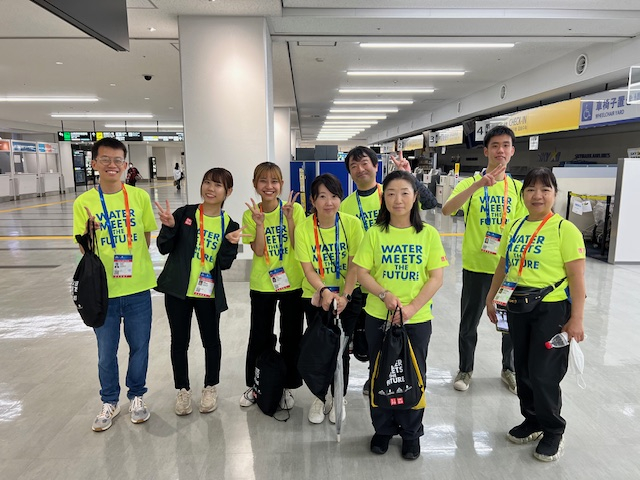
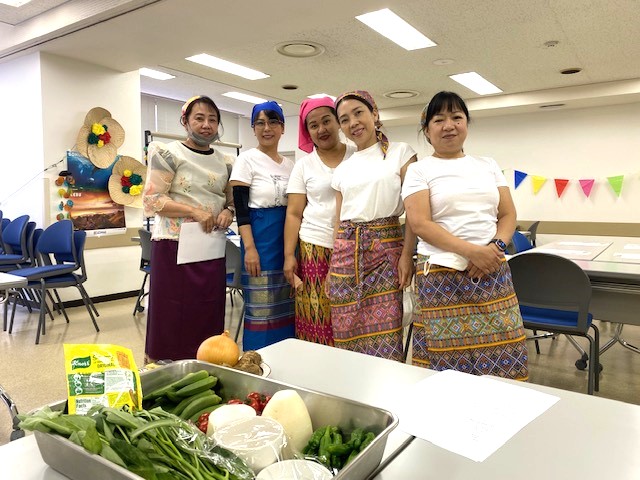
Those at ABOT KAMAY who have passed the certified care worker exam and are busy working every day say the following about the rewards of their work:
-
Linda: "I love my job as a caregiver and I enjoy it. I feel like we have to take care of the elderly."
- Mai: "I am currently working at a facility for people with disabilities. Compared to factory work, it is more rewarding for me because I get to interact with people. There is no age limit for this work (in a caregiving job), and it is comfortable."
- Herminia: "I am proud of my work as a caregiver. My children also respect this job. I love talking to elderly people, and I learn a lot from them."
- Mercedes: "When I was a child, I grew up being loved by my grandparents. So, when I am with users (of a facility), it reminds me of my own family. I love being with each one."
ABOT KAMAY was formed out of gratitude to the Japanese language class and the community that supported the four of them until they were able to enjoy working as caregivers.
"It is thanks to the teachers (in the class) that I could read Kanji, pass the certified care worker exam, and do my job now. We started ABOT KAMAY to give back to the teachers and the community," says Herminia.
In the 10 years since the group's inception, their activities have expanded from the local area to all over Japan.
From now on, they want to make the most of their expertise.
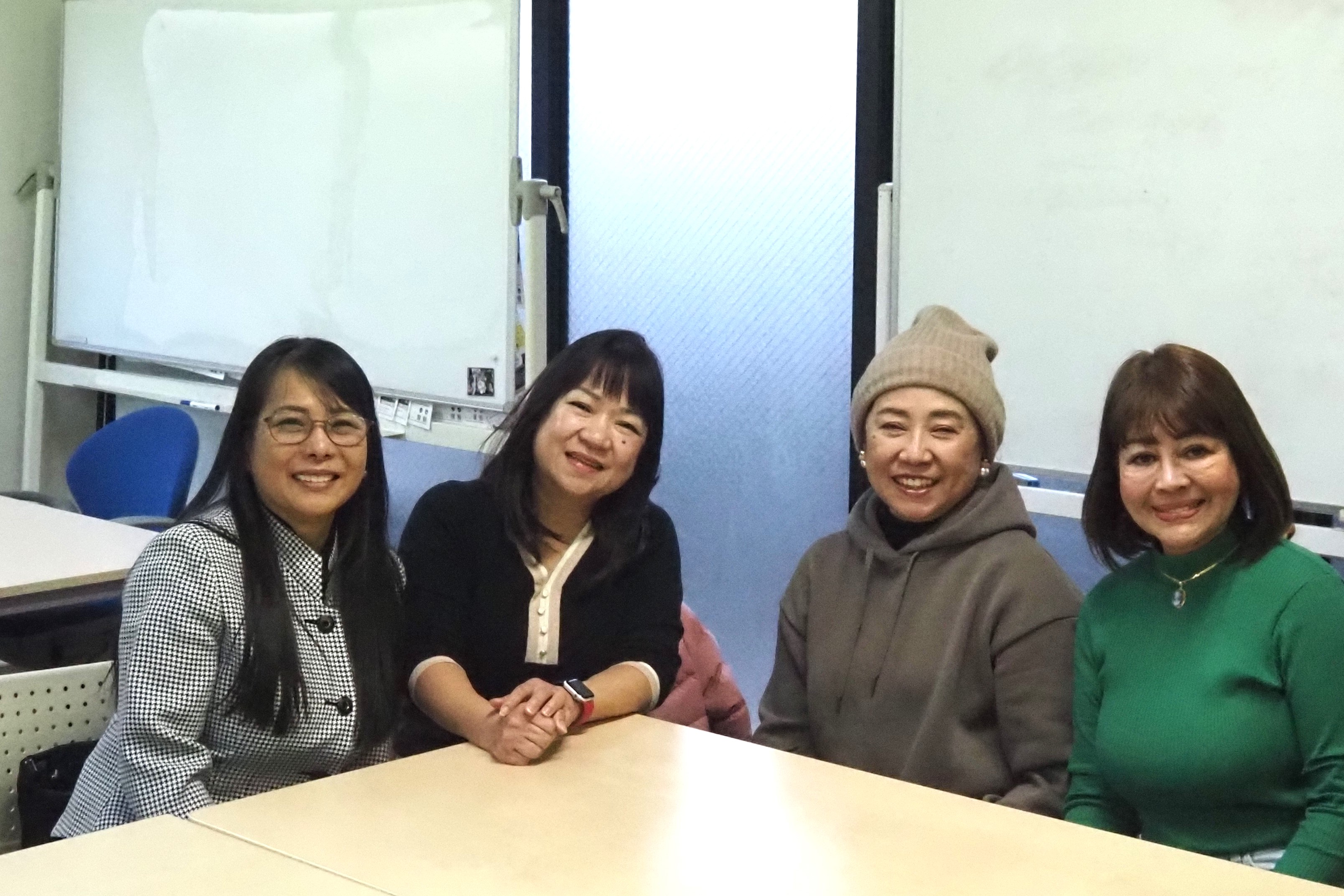
The members of ABOT KAMAY have been giving back to the community and Japanese society through various volunteer activities. From now on, they would like to make more use of their expertise in their activities.
"As for our future goals…we are in our 40s and 60s, so we want to stop dancing and do something more useful for elderly people by using the experience and knowledge from our care work," says Herminia.
On a daily basis, Herminia feels that the number of elderly people who are left alone in their homes is increasing due to the lack of sufficient access to care services, as a result of the containment of social security benefits. In the future, she would like to provide care tailored to the needs of the community with services that are not covered by national insurance.
"I think that even active elderly people have some inconvenience (in their daily lives). I would like to help those in need, by doing things such as accompanying them to hospitals or shopping, or being a companion for those who live alone," says Mai.
We asked the members of ABOT KAMAY to reflect on their activities so far.
- Herminia says "I learned a lot by meeting various people and having many experiences at ABOT KAMAY. Then I gained confidence. I'm really glad I founded the group."
- Linda says "I only remember the fun. I feel grateful for ABOT KAMAY."
- Mercedes says "I'm so glad I joined, because, twenty years after we met, all remaining members are very close."
- Mai says "We are a volunteer group, but I think this might be the place for us when we get older. We have a loose connection and enthusiasm for having fun, like taking trips together."
All of their members are working with confidence and pride as caregivers while expanding their experience and activities in Japanese society. We look forward to their future activities as they move to the next step.
*This article is based on information available at the time of the interview. For the latest information, please contact the organization directly.
